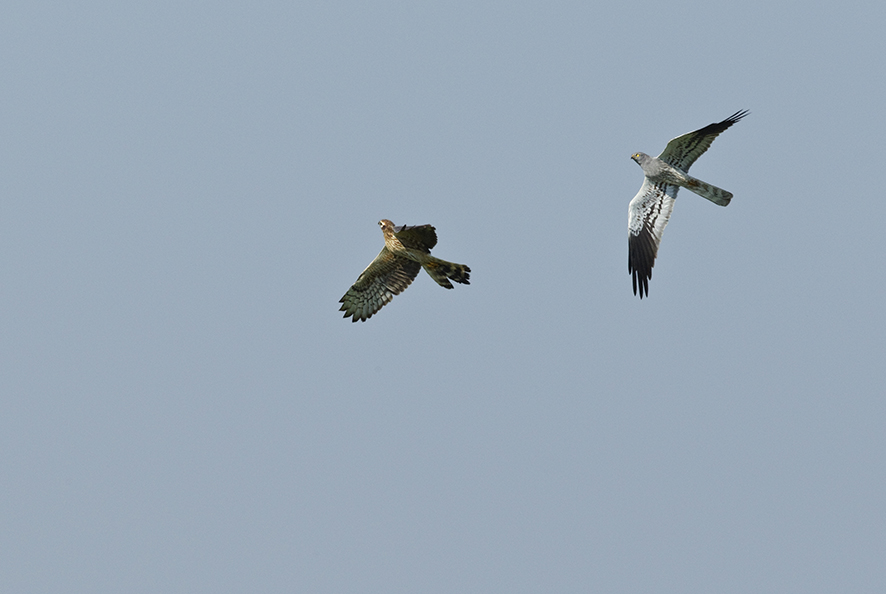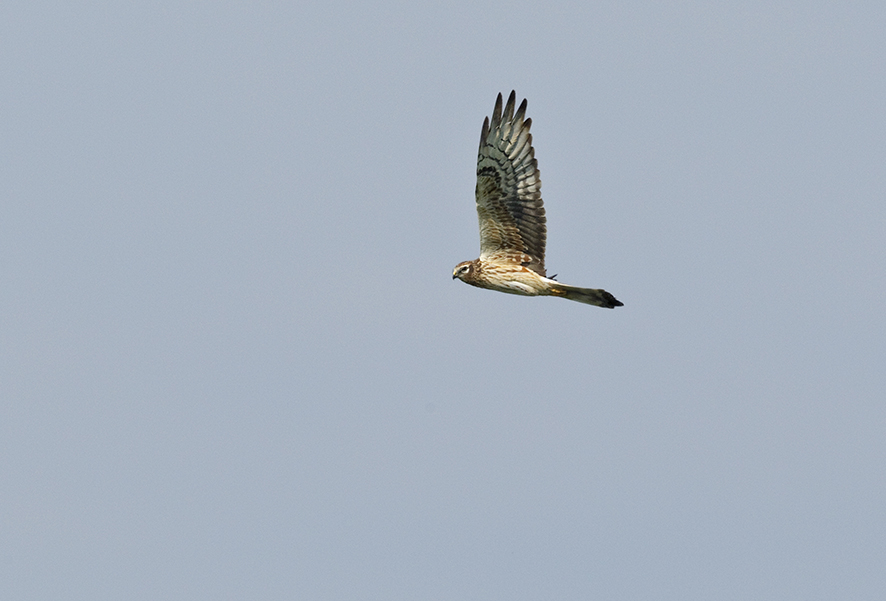Montagu’s harrier
- With life at stake
When a Montagu's harrier nests and lays eggs in it, it does not know that later this summer its offspring will be in extreme danger. Over recent years, the sleek blue-grey bird of prey has replaced its nesting areas in bogs and heaths with the somewhat more unsafe nesting areas in cultivated cornfields. The plant height in the cornfield is absolutely perfect in the period when the harriers mate and nest. The high grain effectively hides the nest and offspring later in the summer, but when the grain is ready to be harvested, it turns out that the nesting area was not so well chosen. Then the offspring risk being killed in the harvesting machine, and this year's breeding work might end up being wasted. As Montagu's harrier is one of Denmark’s rarest breeding birds, it is important that the offspring do not become ”prey” for a harvesting machine. Esbjerg, Aabenraa and Tønder Municipalities are participating in a collaboration ”Project Harrier”, which marks the nesting areas and works together with the landowner to drive around the nesting areas when harvesting time comes around.

Facts
Montagu’s harrier is a slender and elegant bird of prey and is closely related to the more common marsh harrier. It is 44 cm long and has a wingspan of 98 to 110 cm. The male is silver grey with black wing tips and the female is brownish with a lighter body and white upper rump. Montagu’s harrier feeds on small rodents, lizards, large insects, small birds and young birds, which it takes on the ground. Montagu’s harrier breeds in central and southern Europe, where southern Finland and Denmark are estimated to be the northern border of its range. The Danish population is currently approximately 25-40 pairs, where most breeding takes place in the boglands by the Wadden Sea.


